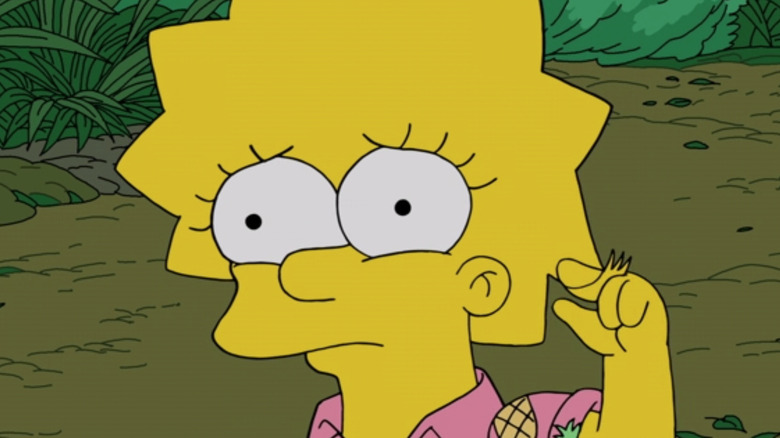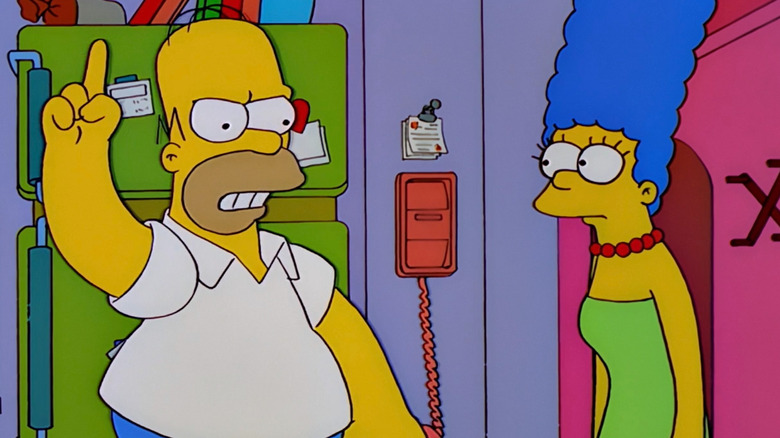Here's Why The Simpsons' Characters Only Have Four Fingers
"The Simpsons" is among one of pop culture's most well-known and beloved TV shows, without a doubt. If you've been alive for the past 30 or so years, chances are the famous yellow family from Springfield has been a part of your life in one way or another. Created by Matt Groening, the show's distinct brand of humor, lovable characters, and satirical jab at American culture have helped thrust it into a stratosphere of iconography that other television shows could only dream of. Since starting its run in 1989, the show has become the longest-running primetime scripted TV series as well as the longest-running animated sitcom of all time. And with over 30 seasons, 700 episodes, and 30 Emmy wins, it appears that the series has no intention of slowing down (via Deadline).
However, with how well-known "The Simpsons" is to countless living rooms across the world, there are still plenty of mysteries when it comes to the show. And no, we're not referring to how the writers have been able to predict the future on more than one occasion. Instead, one of the biggest and simplest questions that arise when looking at "The Simpsons" characters is why they all only have four fingers on each hand. While it may be easy to chalk it up to simple cost-cutting measures, the history of this creative choice takes on more nuance than one might expect.
It's hard to put a finger on it
According to a video by Channel Frederator, the four-fingered choice in animation has been done throughout history for economic and creative reasons. In the early days of traditionally hand-drawn animation from the likes of Walt Disney, it could take as many as 24 drawings to make up one second of animation, meaning that even a short five or 10-minute cartoon could constitute thousands of laboriously hand-drawn frames. With the enormous amount of time and money it takes to create these films, studios did all they could to reduce costs, which meant that taking off even one finger could save plenty of resources in the long run.
So why not cut down more fingers if this is the case? Dating back to the early days of animation, many of these simply designed characters such as Mickey Mouse or Felix the Cat were purposefully given only four fingers, and as explained in the video, five fingers created an uncanny valley effect where their appearance was pushing too close to reality. Four digits made for a nice balance where the anatomy of a hand was recognizable but never pushed any bizarre boundaries.
With a single 27-minute long episode of "The Simpsons" taking anywhere between five and seven months at around $5 million per episode (via Quartz), it would make sense that the show, with its already simplistic art direction, wouldn't hesitate to comply with this common cartoon tradition. And outside of the one "Simpsons" character being granted the coveted fifth finger, the trait remains consistent to this day.

